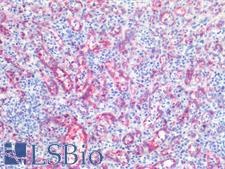Login
Registration enables users to use special features of this website, such as past
order histories, retained contact details for faster checkout, review submissions, and special promotions.
order histories, retained contact details for faster checkout, review submissions, and special promotions.
Forgot password?
Registration enables users to use special features of this website, such as past
order histories, retained contact details for faster checkout, review submissions, and special promotions.
order histories, retained contact details for faster checkout, review submissions, and special promotions.
Quick Order
Products
Antibodies
ELISA and Assay Kits
Research Areas
Infectious Disease
Resources
Purchasing
Reference Material
Contact Us
Location
Corporate Headquarters
Vector Laboratories, Inc.
6737 Mowry Ave
Newark, CA 94560
United States
Telephone Numbers
Customer Service: (800) 227-6666 / (650) 697-3600
Contact Us
Additional Contact Details
Login
Registration enables users to use special features of this website, such as past
order histories, retained contact details for faster checkout, review submissions, and special promotions.
order histories, retained contact details for faster checkout, review submissions, and special promotions.
Forgot password?
Registration enables users to use special features of this website, such as past
order histories, retained contact details for faster checkout, review submissions, and special promotions.
order histories, retained contact details for faster checkout, review submissions, and special promotions.
Quick Order
PathPlusTM CD8A / CD8 Alpha Antibodies
CD8A (CD8, Leu2, MAL, p32) is a cell surface glycoprotein found on most cytotoxic T lymphocytes that mediates efficient cell-cell interactions within the immune system. It acts as a coreceptor with the T-cell receptor on the T lymphocyte to recognize antigens displayed by an antigen presenting cell in the context of class I MHC molecules. CD8A mutations cause CD8 deficiency, described by frequent bacterial infections. In immunohistochemistry, CD8A has cytoplasmic positivity, and it is used to mark normal and malignant T cells, cytotoxic and suppressor T cells, cortical thymocytes, NK cells, and dendritic cells. In cancer, CD8A is used to classify lymphomas and identify CD8-positive melanomas. CD8A also distinguishes splenic hamartoma (positive) from hemangioma and littoral cell angioma (negative).
References: The UniProt Consortium. Nucleic Acids Res. 47: D506-515 (2019); Nucleic Acids Res. 2016 Jan 4;44(D1):D733-45, PMID:26553804; J Clin Invest 2001;108:117, PMID: 11435463; PLoS One 2010;5:e8437, PMID: 20052413;
1 PathPlusTM Antibody

☰ Filters
Products
Antibodies
(1)
Type
Primary
(1)
Target
CD8A / CD8 Alpha
(1)
Reactivity
Human
(1)
Application
IHC-Fr
(1)
IHC-P
(1)
Host
rabbit
(1)
Product Group
PathPlus Cancer
(1)
PathPlus Cancer Pathology
(1)
Clonality
polyclonal pc
(1)
Clone
P17-V
(1)
Format
Unconjugated
(1)
Epitope
C-Terminus
(1)
Publications
No
(1)

Cancer Pathology
Cancer
CD8A / CD8 Alpha Rabbit anti-Human Polyclonal (C-Terminus) (P17-V) Antibody
Human
IHC-Fr, IHC-P
Unconjugated
125 µl/$515
Viewing 1-1
of 1
product results











